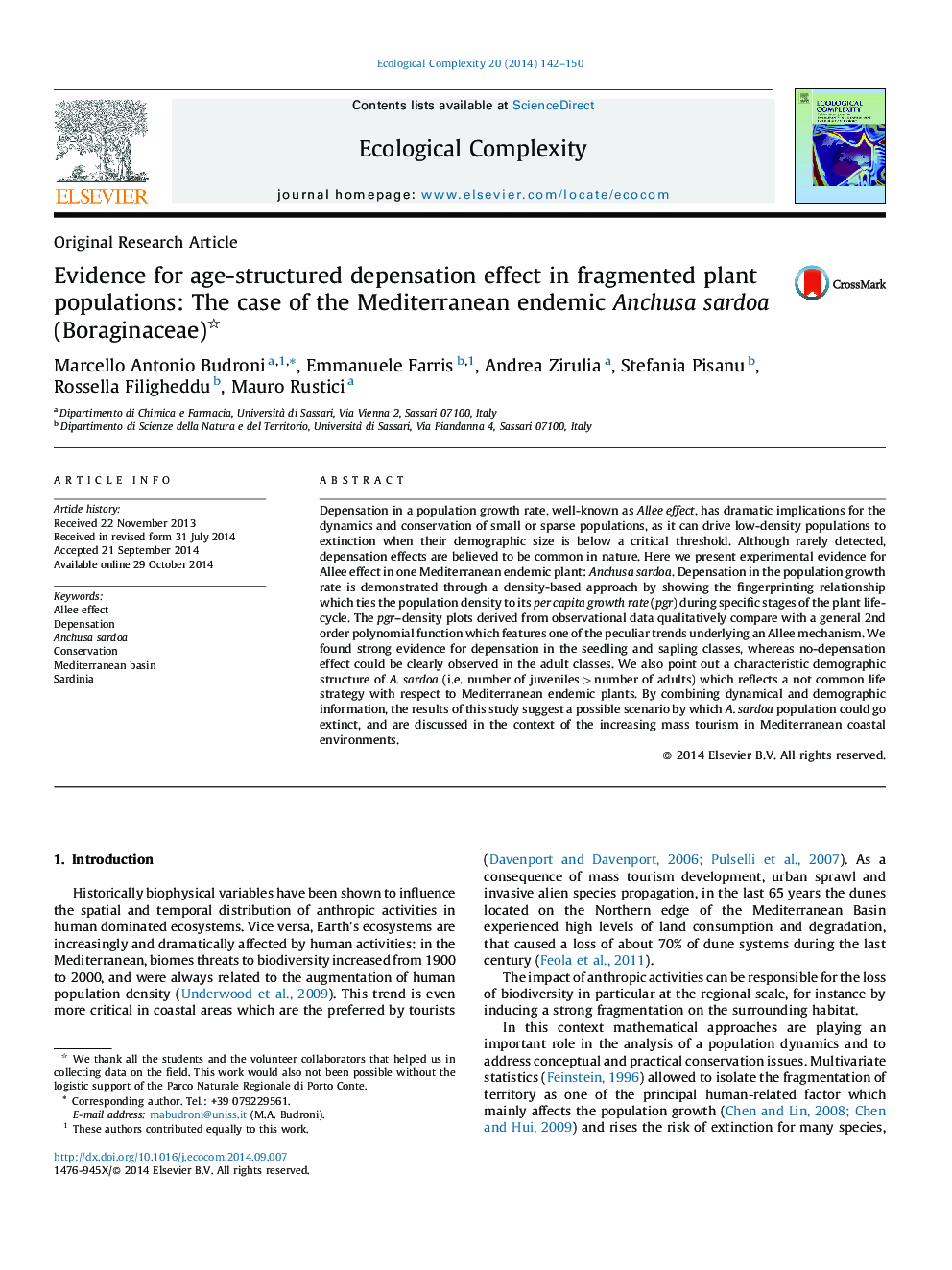| کد مقاله | کد نشریه | سال انتشار | مقاله انگلیسی | نسخه تمام متن |
|---|---|---|---|---|
| 4372364 | 1617094 | 2014 | 9 صفحه PDF | دانلود رایگان |

• A density-dependent approach is applied to detect depensation effect in the growth rate of a Mediterranean endemic plant.
• We show evidence for age-structured depensation effect in the growth rate of a Mediterranean endemic plant.
• We prove that depensation phenomena rule the dynamics of a Mediterranean endemic plant through an age-structured mechanism.
Depensation in a population growth rate, well-known as Allee effect, has dramatic implications for the dynamics and conservation of small or sparse populations, as it can drive low-density populations to extinction when their demographic size is below a critical threshold. Although rarely detected, depensation effects are believed to be common in nature. Here we present experimental evidence for Allee effect in one Mediterranean endemic plant: Anchusa sardoa. Depensation in the population growth rate is demonstrated through a density-based approach by showing the fingerprinting relationship which ties the population density to its per capita growth rate (pgr) during specific stages of the plant life-cycle. The pgr–density plots derived from observational data qualitatively compare with a general 2nd order polynomial function which features one of the peculiar trends underlying an Allee mechanism. We found strong evidence for depensation in the seedling and sapling classes, whereas no-depensation effect could be clearly observed in the adult classes. We also point out a characteristic demographic structure of A. sardoa (i.e. number of juveniles > number of adults) which reflects a not common life strategy with respect to Mediterranean endemic plants. By combining dynamical and demographic information, the results of this study suggest a possible scenario by which A. sardoa population could go extinct, and are discussed in the context of the increasing mass tourism in Mediterranean coastal environments.
Journal: Ecological Complexity - Volume 20, December 2014, Pages 142–150